Quentin Tarantino Movies Ranked from Worst to Best
Make yourself a drink and relax, because we’ll be ranking every film in Quentin Tarantino’s filmography in two shakes of a lamb’s tail.

Quentin Tarantino thinks a lot about filmographies. It began in his youth when he realized he could compare and contrast the efforts of a director like Howard Hawks—tracing his rise in crime pictures, a la Scarface (1932), on through everything from screwball comedy classics to efforts that helped define what film noir was. Tarantino has likewise carefully, and very self-consciously, curated his filmography as it led the way in defining the indie revolution of the ‘90s, and then went on its own genre detours in the 2000.
This is one of the main reasons he’s insisted he will only direct 10 films, thereby bequeathing to posterity a concise and tidily self-aware legacy (although this only works if you count the sprawling two volumes of Kill Bill as a single film). Unfortunately, this also means his time behind the camera is almost up, with nine pictures to his name and 10th and final film, the intriguingly titled The Movie Critic, still off in the horizon. Even so, Tarantino’s impact on Hollywood and American moviemaking as a whole is already secure, and we have a pretty good idea about how that preciously guarded oeuvre stacks up. Below is the ranking.
*Editor’s Note: In addition to counting Kill Bill as a single effort, as is Tarantino’s preference, we are only including feature length films where he is the sole director. So no films based on his scripts like True Romance and From Dusk Till Dawn, and no anthology films he participated in, i.e. Four Rooms.
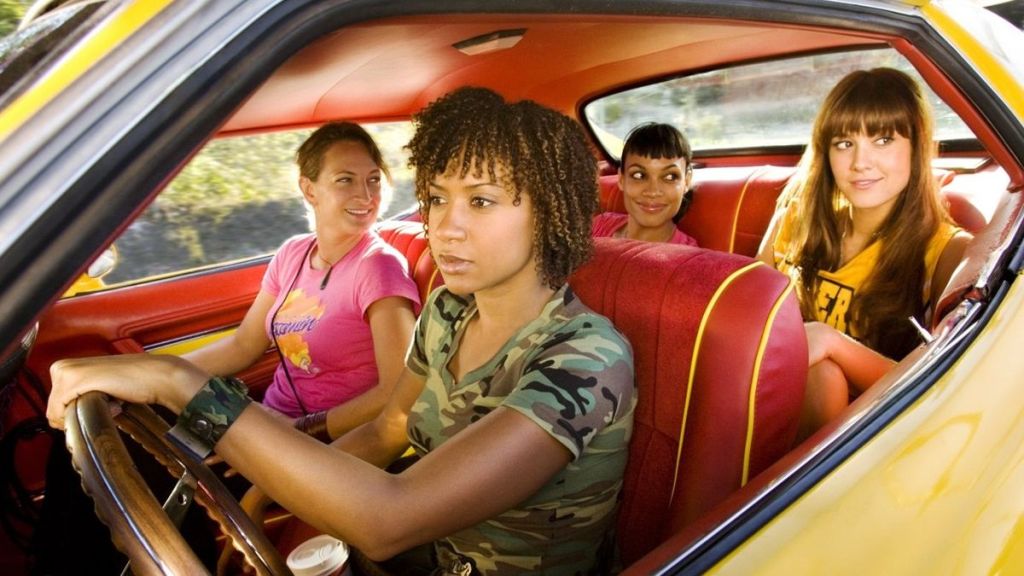
9. Death Proof (2007)
Quentin Tarantino considers Death Proof his weakest effort, a “left-handed movie” that indulged his already fairly indulgent instincts. We do not disagree. Constructed as the second half of a double feature throwback to exploitation cinema, Death Proof was treated with surprising indifference when it opened alongside Robert Rodriguez’s Planet Terror as the Grindhouse double bill in 2007. Also since Tarantino’s flick was the slower, more deliberately paced ode to ‘70s sleaze of the two, even the audiences who did show up were generally colder toward the effort.
Yet despite Death Proof’s deficiencies (including a try-too-hard attempt to recreate the sensation of there being missing reels of footage), it has aged surprisingly well. Taken by itself in its extended, preferred form, Death Proof features a bold performance by Kurt Russell whose Stuntman Mike is terrifying, not only because of the big muscle car he uses to kill women, but because Tarantino and the actor refuse to let audiences mistake this predator as anything other than a pathetic creep. By the end of the picture, Mike is pitifully begging for mercy from a superior stuntwoman (real-life stuntwoman Zoë Bell), and she doesn’t grant it. The movie’s intentional Psycho-knockoff structure, where we wind up following two sets of potential victims stalked by Mike, remains narratively knotty with starts and stops, but the cast is game, and the actual car chases in the third act are still as visceral and terrifying as anything else filmed behind a wheel in the last 15 years.
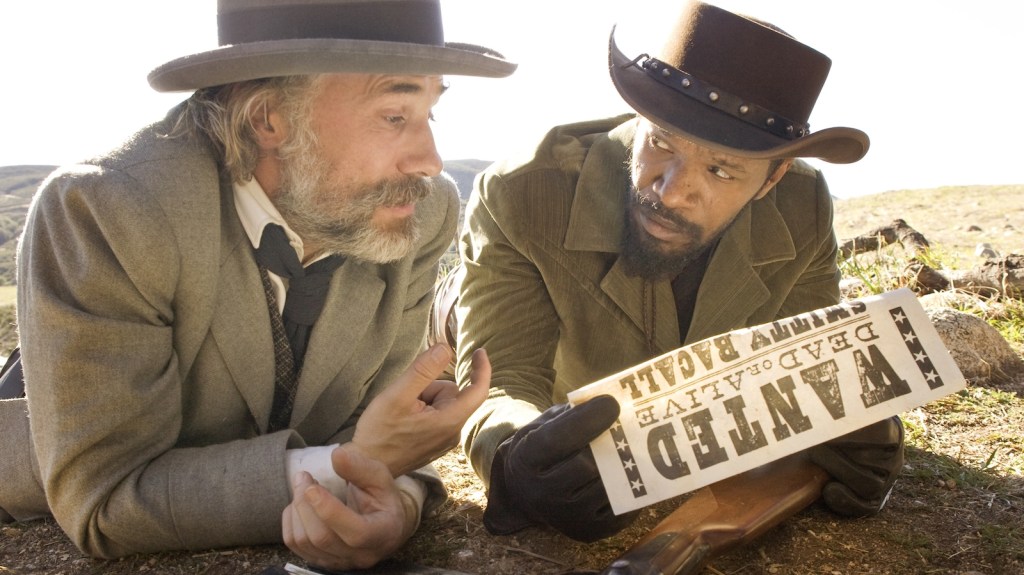
8. Django Unchained (2012)
Django Unchained is one of the only two films for which Tarantino received an Oscar (the other is Pulp Fiction). Both awards were for screenwriting. While we would agree with the Academy that Django’s script is, at times, disarmingly clever as it grafts a Spaghetti Western onto the tale of an escaped Black man eradicating a Mississippi plantation in the Antebellum South, it’s that same glibness which causes Django Unchained to also be the shallowest film in Tarantino’s catalog.
Whereas the cinematic vengeance wreaked on the Nazis in Inglourious Basterds was inspired, it’s far more reductive in a film about American chattel slavery where a benevolent white man (Christoph Waltz, who also won an Oscar) frees a single slave and teaches him how to shoot up the bad whites. In fact, we’d argue Waltz’s Dr. King Schultz gets all the best lines and heroic moments instead of Jamie Foxx’s laconic Django. Where the film really works, then, is when it unflinchingly stares into the evil of the South’s “genteel” class, providing Leonardo DiCaprio with one of the broadest, and easily the most sinister, performances of his career as plantation owner Calvin Candie. Samuel L. Jackson, meanwhile, gives one of his most underrated turns as Stephen, a house slave who reveals himself to be the film’s cruelest villain.
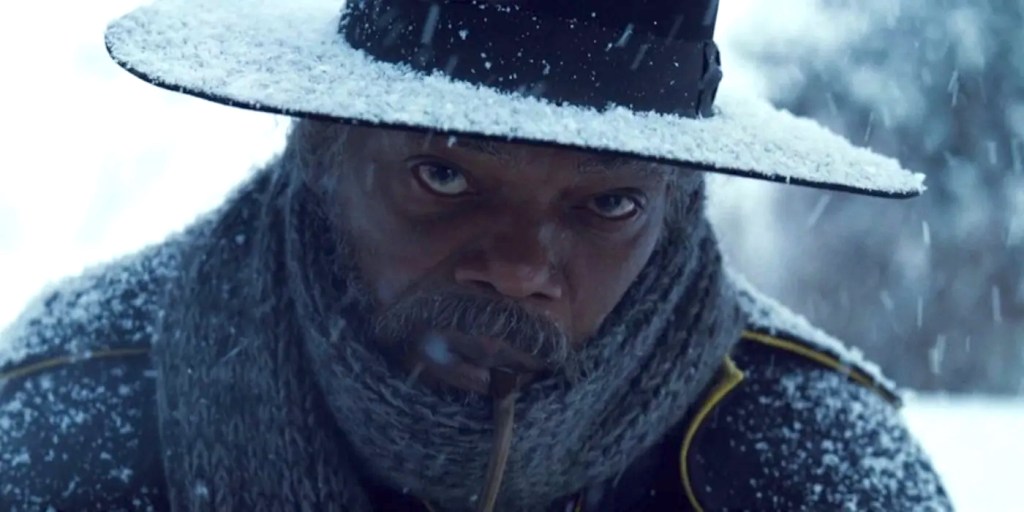
7. The Hateful Eight (2015)
For The Hateful Eight, Tarantino filmed in 70mm Ultra Panavision and with the same lenses William Wyler used on Ben-Hur (1959). It’s a slyly subversive choice given how this snowbound Western is Tarantino’s most claustrophobic and intimate effort since Reservoir Dogs. It is those similarities which has caused Eight to also have many detractors who find its visual grandiosity wasted on a film that could just as easily be a play about eight(ish) strangers who spend a fateful, blood-soaked evening in a haberdashery during an 1880s snowstorm.
The Hateful Eight unmistakably revisits themes and filmmaking techniques from QT joints past: paranoia and suspicion among loquacious killers who are filmed with spinning steadicams; long-simmering and racist animosity curdling into acts of righteous revenge; and a cast that includes Samuel L. Jackson, Tim Roth, Kurt Russell, and Michael Madsen. However, the sheer nihilistic bluntness of the vision makes it strangely hypnotic, with the cold-blooded cunning of Jackson’s Maj. Marquis Warren proving to be a far more captivating antihero than most. Russell, meanwhile, plays as a sly deconstruction of John Wayne’s persona and the Hollywood Western ideal while Jennifer Jason Leigh is fearless as the outlaw he yearns to hang. The film is as bitter as its frigid setting and perhaps a bit underappreciated.
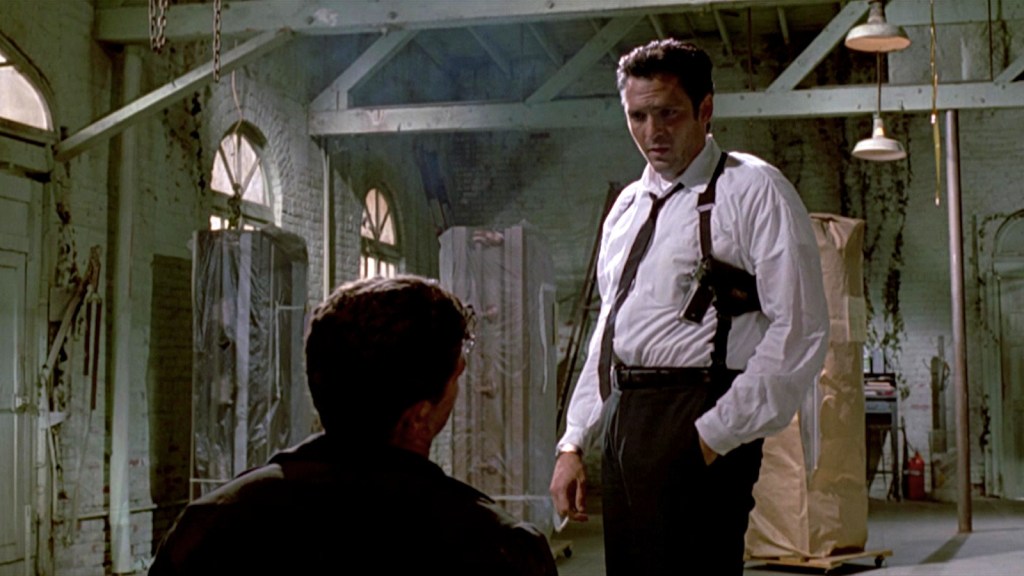
6. Reservoir Dogs (1992)
We know. By dint of historical and cultural importance, there is maybe only one QT flick to leave a bigger mark on the zeitgeist than Reservoir Dogs, and if ranked purely by that meter it’s nigh impossible to top. This film was such a revelation when it premiered at Sundance in ’92, the New York Daily News likened it to audiences watching the Lumière Brothers’ 1895 film of a moving train for the first time. But as satisfying an exercise in style and audacious filmmaking as Reservoir Dogs is… it’s worth admitting it is also entirely that. An exercise in style.
Yet what style! Consisting of a cast of then-unknowns, plus Harvey Keitel, Reservoir Dogs loudly trumpets the arrival of a new writer-director who treats his storytelling structure like a savant child tearing down toy blocks and rearranging them in startling fashion. The film is about eight hard-case thieves whose diamond store heist (which we never see) went so horribly wrong that the baby of the group (Tim Roth) comes back with a bullet in the belly, and his accomplices are left with the suspicion they were set up by a rat.
It’s a straightforward setup that’s carved off into a litany of detours as the story bounces between half the robber’s points-of-view and skips back and forth along the timeline, from what increasingly looks like a last supper where Mr. Pink (Steve Buscemi) explains why he doesn’t tip, thereby outraging a room full of murderers, all the way to a brutal bloodbath finale. In terms of swagger and first film calling cards, Reservoir Dogs is unparalleled, but save for Mr. Pink’s stinginess and Mr. Blonde’s (Michael Madsen) penchant for torture while jamming to ‘70s hits, the film never lets us into the minds of any of its characters. They’re infinitely quotable, and look cool whether in sunglasses or buckets of viscera, but as an emotional experience, it’s curiously bloodless.
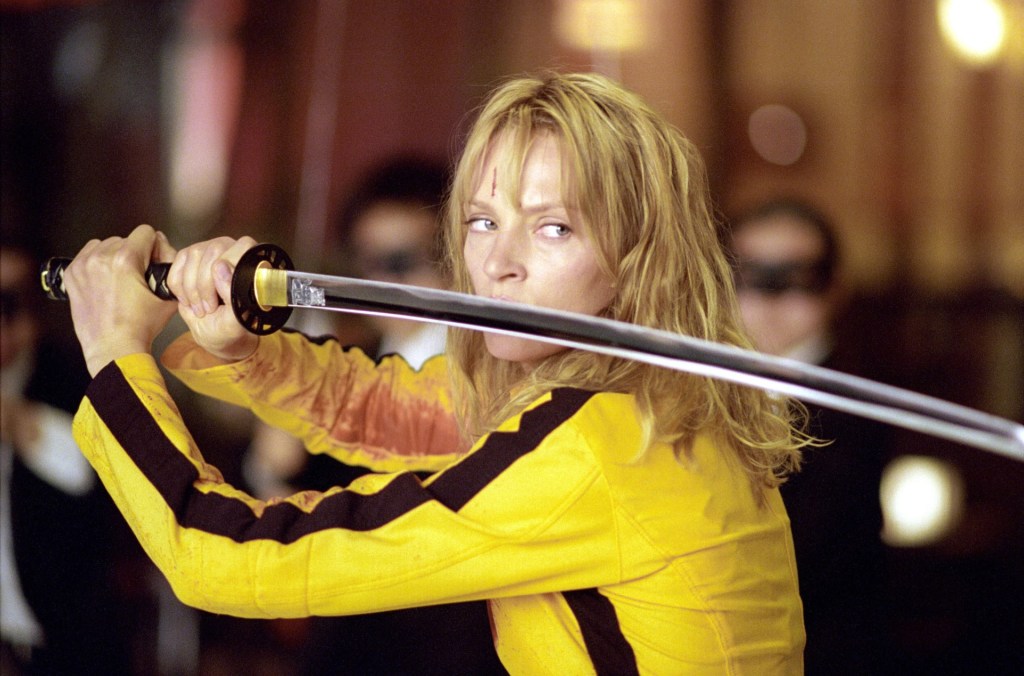
5. Kill Bill (2003 – 2004)
There are arguably two eras in Tarantino’s career: the crime pictures he made in the ‘90s and the genre love letters he’s made afterward. In all its excess, Kill Bill is a demarcation point between the two. It therefore has its most ardent fans and detractors. But when accounted for wholly on its own merit, this goofy and glorious salute to Hong Kong martial arts films of the mid-20th century, as well as Spaghetti Westerns from the same period, remains a feast for the eyes and ears. Conceived as one film before being broken into two volumes for commercial purposes, the combined 247-minute might of the work is obviously indulgent, from its divergences into anime-crafted backstories to shamelessly emulating De Palma while Darryl Hannah whistles a theme that Bernard Hermann wrote for Torn Curtain before Hitchcock rejected it.
Somehow though it synthesizes into one of the most irresistible manifestations of cool in the last 30 years, with Uma Thurman donning Bruce Lee’s motorcycle jumpsuit for a one-versus-88 sword fight which remains a benchmark in the joys of hyper-stylized violence. It also finds a beating heart beneath the countless flourishes, leisurely and gracefully revealing itself to be about a custody dispute between an aggrieved mother (Thurman) and her abusive ex Bill (David Carradine). Her final emancipation after four hours is triumphant.
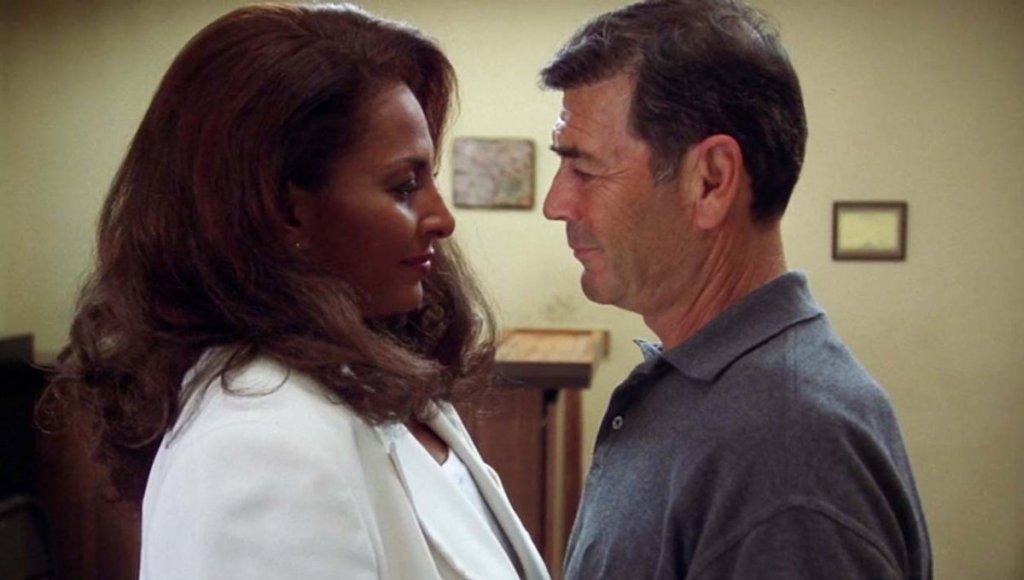
4. Jackie Brown (1997)
Jackie Brown stands apart for Tarantino. Here is the only screenplay of his that is adapted from another work, in this case Elmore Leonard’s novel Rum Punch. In retrospect, Tarantino might have tried his hand at pulling directly from his influences more often, because Jackie Brown is still the director’s most adult and emotionally sophisticated film. While certainly making the material his own, right down to reimagining Leonard’s protagonist as a Pam Grier star vehicle, there is a tangible melancholy permeating Jackie Brown and a knowingness about the pain of upper-middle-age (and what comes after).
Hence despite featuring a dazzling ensemble that includes Robert De Niro, Michael Keaton, and Samuel L. Jackson at his most ferocious, Jackie Brown is really Grier’s movie, as well as Robert Forster’s when he enters as the aging bondsman who is sent over to collect Grier’s on-the-run flight attendant but instead falls under her spell. The empathy Tarantino invests in both characters of a certain age, and evokes in the audience despite building an intricate web of deceit and double crosses, gives the picture a rare gravitas. Even as scheming, betrayals pile up, including a brilliant sequence of Jackson slowly cajoling Chris Tucker to climb into his own coffin, the images that last are of Grier and Forster grooving to the Delfonics on Sunday morning.

3. Once Upon a Time… in Hollywood (2019)
Tarantino has called Once Upon a Time… in Hollywood his best movie. We do not rate it quite that high, but we can see the appeal. Acting as a culmination of at least the last 15 years in the filmmaker’s output, as well as an excavation to the bedrock levels of his cinematic interests, Once Upon a Time… in Hollywood uses the filmmaker’s penchant for historical revisionism not only to get revenge on a real-life evil, but also to simply bask in a California vibe the filmmaker wishes lasted forever.
Set during the dying gasps of the old Hollywood system, OUATIH delicately navigates between that fading world and the New Hollywood vitality which was only then coming into its own. Remarkably, Tarantino reveals sincere affection for both eras, nostalgically sympathizing with showbiz also-rans he grew up loving, personified by an amiably wretched Leonardo DiCaprio, while lionizing the cinema revolution that made his favorite era of American movies possible—and linking both with a romanticized vision of Sharon Tate (Margot Robbie), who is recast from her tragic history as a victim of the Manson Family cult into an idealized personification of the ‘60s.
The performances are great, especially Brad Pitt as an easygoing stuntman whose affability masks dark waters, but it is the world they inhabit, and how Tarantino fetishizes it, which will ultimately cause it to linger in your own memory as a Paradise Lost. There are choices to debate, and blemishes to be found, but the film’s transportive ability immerses you in the SoCal summer of ’69. It’s haunting.
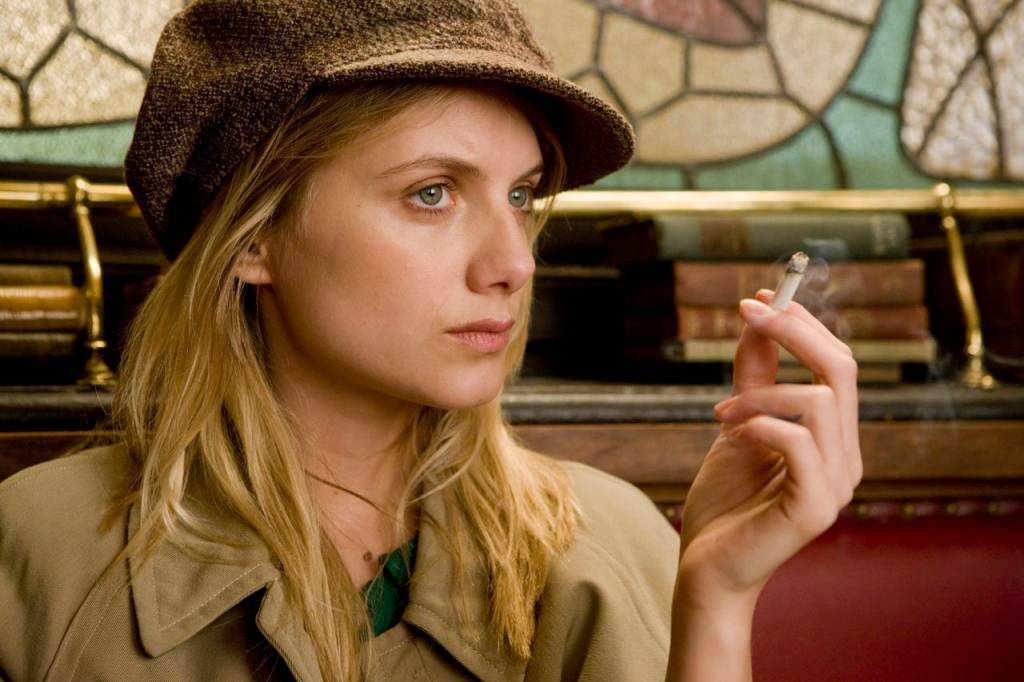
2. Inglourious Basterds (2009)
In 2009, Inglourious Basterds was a palate cleanser for its filmmaker. Following the extravagances of Kill Bill and especially Death Proof, Tarantino made a conscious effort to rein it in. The result was the tightest and tensest film he’s conceived on this side of Pulp Fiction. Inglourious Basterds is ostensibly a standard WWII men-on-a-mission movie; the type DiCaprio’s Rick Dalton might have been cast in once upon a time. But the brilliance of the piece is that the titular and cartoonish Basterds—American G.I.s parachuted into Nazi-Occupied France six months ahead of D-Day to boogeyman the Germans—are just a single thread in a much larger tapestry.
The most important of which is not the heroes but the villain, an SS officer loosely based on Klaus Barbie but made entirely into something more operatic on the screen by Christoph Waltz. A smiling and charismatic charmer who, like Waltz, can speak four languages, Col. Hans Landa is the devil made flesh, one who perverts the iconography of John Ford and Sergio Leone into something vile and sadistic. So it’s all the more satisfying how unaware Landa is that his greatest nemesis is not Brad Pitt’s clownish American struggling to pronounce “buongiorno,” but the Holocaust survivor he let slip away. When Shosanna Dreyfus (Mélanie Laurent) executes her Old Testament vengeance on the entire high command of the Third Reich in a movie house, including no less than the Führer, it is the purest realization of Tarantino’s dream: the power of cinematic violence making the world a better place.
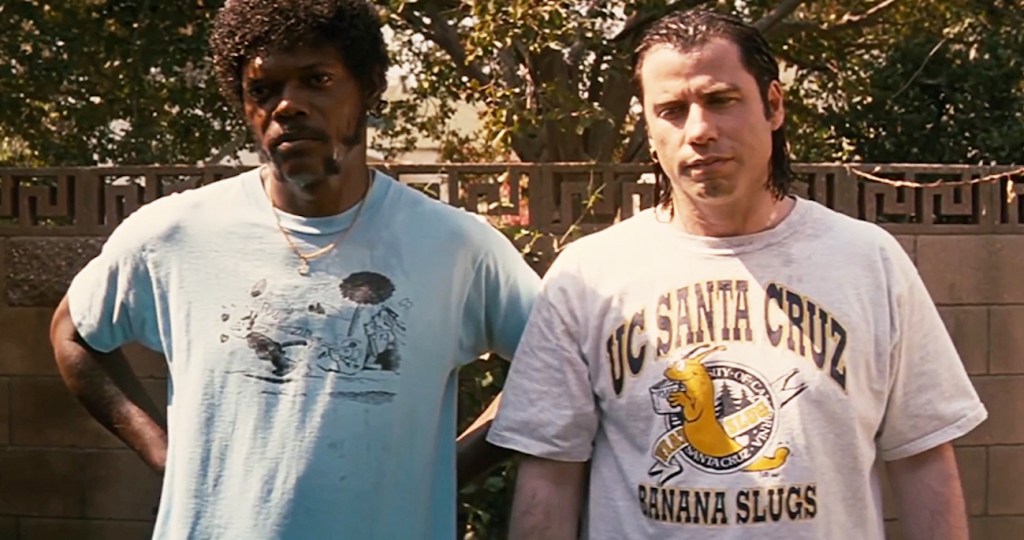
1. Pulp Fiction (1994)
If one were to compile a list of the most influential or game-changing American films in the last 30 years, it would be a challenge to place much above Pulp Fiction. So it goes with this ranking too. While Reservoir Dogs loudly announced Tarantino as a new significant voice, Pulp Fiction was the sophomore effort that cemented indie cinema’s newfound dominance in the cultural mainstream of the ‘90s. It’s also, as ever, a masterful delight.
Deftly merging humor with horror, and demented crime drama theatrics with a retro sense of cool, Pulp Fiction crystalized the Tarantino aesthetic. It’s a grab-bag collage of various cinematic and TV influences (most from the seedier side of the 1940s through ‘70s), garrulous characters with deep reservoirs of media literacy, and a nonlinear story that increasingly resembles a novel in its plotting as opposed to the standard three-act structure. Indeed, Pulp Fiction is essentially a brutally long weekend in the City of Angels where the lives of gangsters, drug dealers, prize fighters, and one poor bastard in a gimp suit are changed forever.
Is it fate, is it the hand of divine providence, or is it meaningless happenstance? Who cares?! What matters is how snazzy it all is as Tarantino resurrects the careers of childhood heroes like John Travolta, creates new ones for the next generation via Samuel L. Jackson’s fire and brimstone monologues, and redefines what a heartfelt scene means after Travolta and Uma Thurman do the Batusi in their socks and then go home for a nightcap. You can write a thesis on the meaning and subtexts of Pulp Fiction (many have), but the power comes from the whole picture affecting a deliberate and unmistakable level of charm, even when its antiheroes are, to quote the director’s onscreen cameo-character, dressed “like a couple of dorks.”
